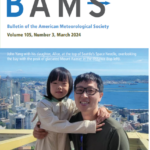Task 231
Microphysical Processes of Atmospheric Convective Systems
Principal Investigator(s):
T. Iguchi
Sponsor(s):
W-K. Tao
Last Updated:
May 14, 2013 16:46:21
Description of Problem
Cloud microphysics focuses on the physical processes on the scale from um to cm orders in clouds. Not only it decides features of precipitation from clouds attributed to convective systems but also it has a large impact on the structure of the system through heating or cooling by the water phase conversion and radiation process. Exact representation of cloud microphysics is thus an important subject of numerical studies for the system. We propose the development of the numerical model package to investigate a role of the cloud microphysics for the atmospheric convective systems.
Scientific Objectives and Approach
We plan to develop The Weather Research and Forecasting model coupled with Spectral Bin Microphysics for cloud (WRF-SBM) which can simulate a detailed structure of cloud microphysics in the particulate forms in idealized or real-case simulations. The development of the model is proceeded with collaborating on the project of the synthetic Global Precipitation Measurement (GPM) simulator. The coupling between the model and the Goddard Satellite Data Simulation Unit (SDSU) offers the Virtual Cloud Library (VCL) to support the development of the satellite retrieval algorithm in the GPM mission. The VCL is composed of ground validation (GV)-constrained 3D database of cloud resolving model (CRM) output and simulated GPM L1 product. The satellite retrieval algorithm can be cross-checked with a physical-based approach by using the VCL as a priori database in the ground validation. We have three stages for experiments: the Canadian CloudSAT/CALIPSO Validation Project (C3VP), Light Precipitation Validation Experiment (LPVEx) and Midlatitude Continental Convective Clouds Experiment (MC3E).
Accomplishments
During this term, we conducted numerical simulations for two snowfall events on January 20-22, 2007 over the Great Lakes region during the C3VP measurement campaign. The simulation results were compared with the observed data by C-band radar (an example is figured) and in-site aircraft measurements in order to validate and improve the model simulation for compiling the VCL. Some additional simulations were conducted using a new table for microphysical parameters derived from the aircraft measurement.
We are updating the microphysical module newly to calculate liquid fraction of melting ice particles and riming fraction of snowflakes. The updated model will be employed for the simulations of the snowfall events during the C3VP again and mixed-phase precipitation events during the LPVEx campaign.
Refereed Journal Publications
Iguchi T., T. Nakajima, A. Khain, K. Saito, T. Takemura, H. Okamoto, T. Nishizawa and W. Tao, 2011: Evaluation of Cloud Microphysics Simulated Using a Meso-Scale Model Coupled with a Spectral Bin Microphysical Scheme Through Comparison With Observation Data by Ship-Borne Doppler or Space-Borne W-Band Radars. J. Geophys. Res. Atmos., submitted.
Other Publications and Conferences
Iguchi T., T. Matsui, J. J. Shi, X. Li and W. Tao, 2010: Numerical experiment of lake-effect snowstorm in C3VP campaign using the WRF model coupled with spectral bin microphysics., American Geophysical Union Fall Meeting, San Francisco, CA, December 13-17, 2010.
Iguchi T., T. Matsui, J. J. Shi and W. Tao, 2010: Numerical experiment of lake-effect snowstorm using the WRF model coupled with spectral bin microphysics for cloud., AMS 13th Conference on Cloud Physics, Portland, OR, June 28 – July 2, 2010.
Task Figures
| Fig. 1 – C-band reflectivities (a) from the King City Radar and (b) simulated by the WRF-SBM at 0600 UTC 20 January 2007. |






